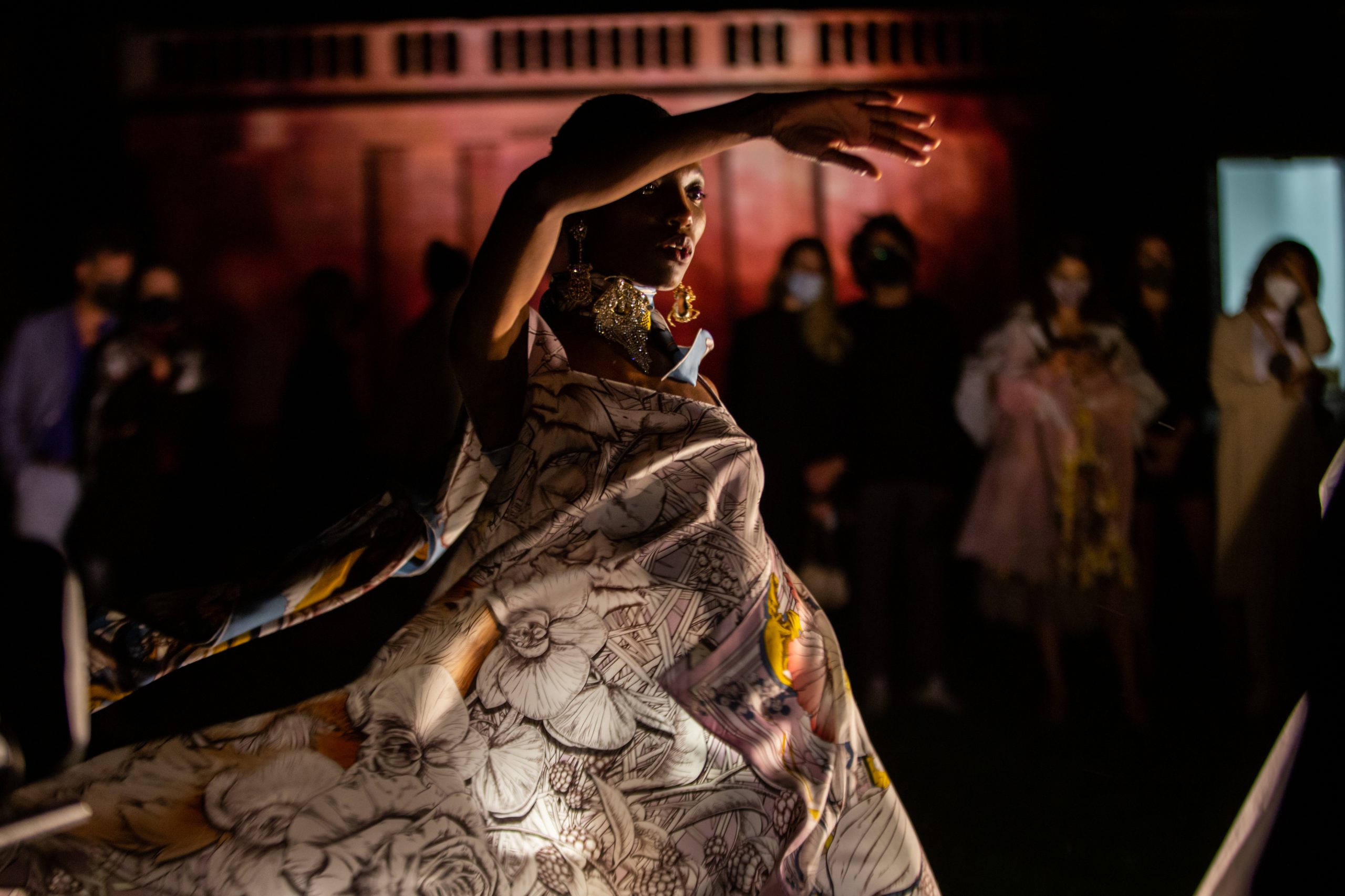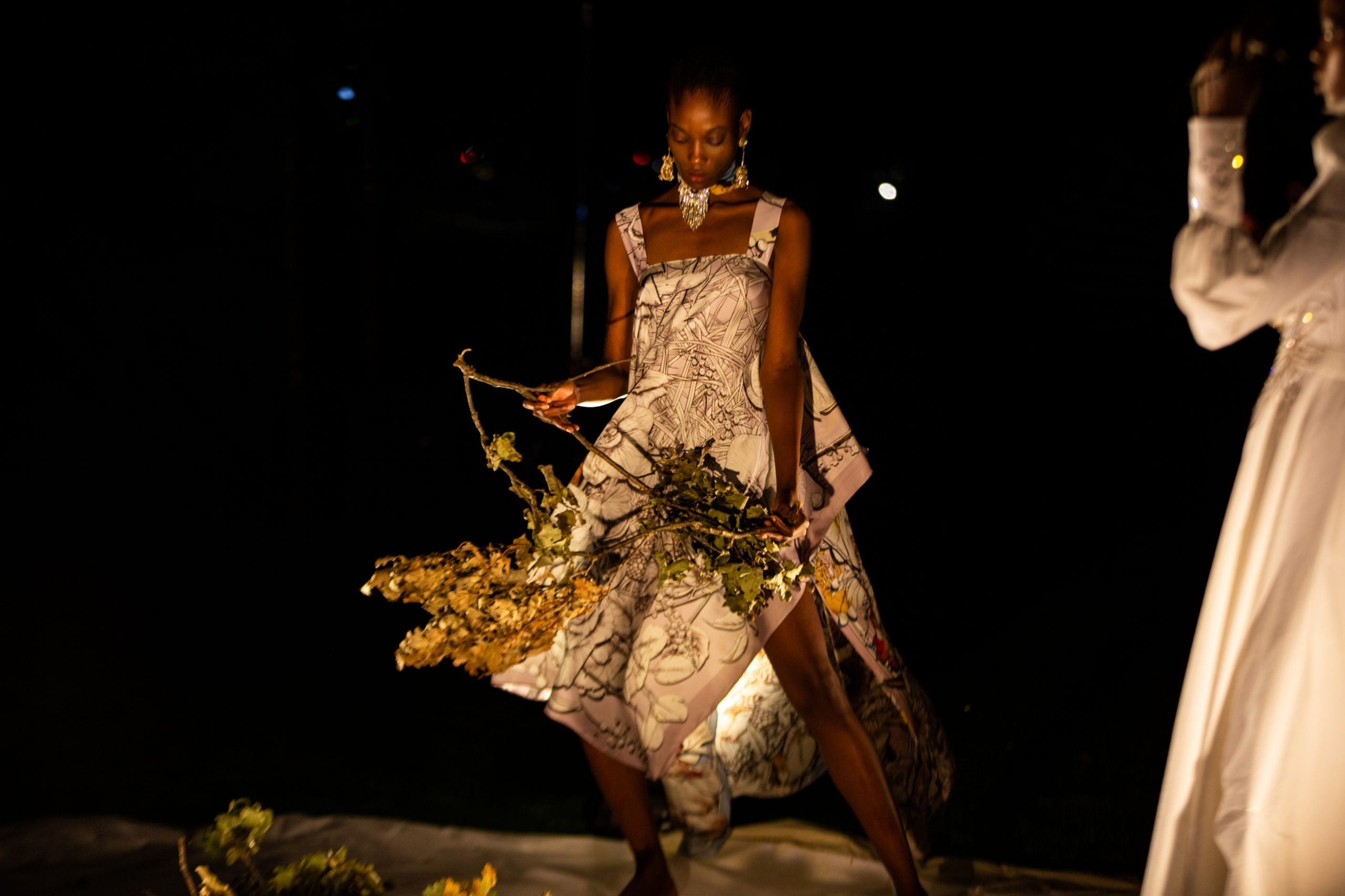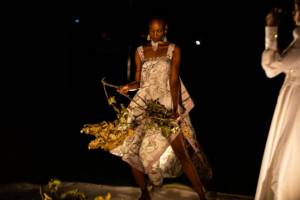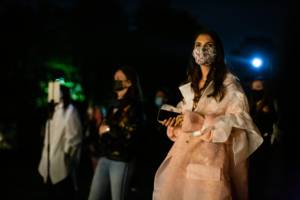Ania Catherine & Dejha Ti’s art activation for Mithridate SS21 Fashion Show at the Serpentine Gallery

SPRING SUMMER 2021: ‘ANTHROPOCENE’
A PERFORMANCE INSTALLATION BY ANIA CATHERINE & DEJHA TI PUSHING BOUNDARIES OF CREATIVITY & INNOVATION TO OFFER A NEW CONCEPT TO TRADITIONAL LONDON FASHION WEEK SHOWCASING
Mithridate’s Spring Summer 2021 collection, entitled ‘Anthropocene’, is translated into a performance installation by critically acclaimed MTArt Agency represented artists Ania Catherine and Dejha Ti, with original music by Daniele Mana.
Held within the Royal Park grounds of London’s iconic Serpentine Gallery, the performance brings the audience on a journey through the effects of the Anthropocene on the planet and its various life forms. Building on Demon Zhang’s focus on the fragility, vulnerability, and beauty of the life forms that are threatened by this era of unprecedented human impact on the planet, the artists use the stories told through the garments as source material to create a multisensory experience.
A creative hybrid concept designed to push the boundaries of showcasing a collection during London Fashion Week, amidst unprecedented times, interpreted through an immersive, live performance installation whilst layering digital footage of the collection in projection form to create a unique multisensory experience for the audience.

The set and props have been carefully considered using found botanicals and woodchip remains to reflect the theme, whilst ensuring all is repurposed after the activation. A collaboration with Diptyque adds to the sensory experience with earth-based notes infused within the grounds.
Ania Catherine explains: ‘We look at a jacket and ask, what would this jacket be if it were an environment? A world? If it had a heartbeat? How would it sound? And we build that.’

Models perform within the gallery grounds in designed site-specific vignettes as they embody the concepts; they are doing. The activity of the models is a metaphor for the necessity for collective and individual human action. The concept narrative urges the audience to be aware that to move forward, humanity can’t just exist and continue as we have been, collectively we have to make changes, actively work together to rewrite the status quo.
Through this experiential work that blurs many lines, the concept aims to leverage the innate power that lies in the human body to inspire others to ‘not just stand there’, but listen, and act. Ania and Dehja worked closely with the models to ensure there is a sense of internalizing this message in rehearsals, looking for them to dive into the story through a mix of choreography and personal reflections on the subject.
‘Deep down everyone has an understanding of the urgency of these issues; if we can tap into that understanding, and activate it with a combination of fashion, choreography, the human body, music, installation, and experience design, then we have achieved what we are setting out to do.’ says Ania Catherine. Reminiscent of McQueen’s performances of the late 90s, ‘ Anthropocene’ is designed to evoke a range of feelings and textures, it is sensitive, nuanced, raw, beautiful, and tragic, but ultimately ends with a heavy hopefulness.
Ania Catherine adds:
‘We must u-turn, we must start defining and respecting planetary boundaries.’ Part performance art, part call to action, ‘Anthropocene’ is not the complete story, but a powerful glimpse.

Mithridate Founder Demon Zhang shared:
‘As I approached this collection, particularly during intense moments of reflection under lockdown, I was drawn to the fragility of our world, the beauty found in nature against the impact of human behaviour, the importance to coexist peacefully has never been more necessary; to respect the planetary boundaries, our mother nature. Ania and Dejha bring to life this poignant message beautifully through their interpretation and powerful performance. They inspire me and give me hopeful confidence that creativity can, under challenging difficult times, always find its beauty.’
Born as a creative response to lockdown, Mithridate’s Spring Summer 2021 collection follows on from a successful collaboration with Catherine and Ti in early 2020, entitled Natural Subject(s) as part of the brand’s ‘Collective Series’, a digital based platform, aiming to reveal an ongoing series as a collective body of work, exploring art as a multi sensory, immersive experience. Zhang’s vision is to grow the brand’s global artistic community, fusing the creative mediums of fashion, art, design and technology as part of the digital offering, igniting creativity through collaboration, providing unity and support under crisis whilst celebrating the power of innovation and creativity despite our world’s challenges.
Mithridate developed the collaboration concept with award-winning MTArt Agency and its Founder Marine Tanguy, who represents the most exciting up and coming visual artists worldwide, artists with innovative techniques, inspiring content and strong messaging.
www.mithridate.uk @mithridate.official
THE ANTHROPOCENE
Dating from the commencement of significant human impact on Earth’s geology and ecosystems, including, but not limited to, anthropogenic climate change. The time period coincides with the great acceleration, a post WW11 time during socioeconomic and Earth system trends started increasing dramatically and the atomic age.Human impact on the environment or anthropogenic impact on the environment includes changes to biophysical environments, and ecosystems, biodiversity and natural resources caused directly or indirectly by humans, including global warming, environmental degradation (such as ocean acidification), mass extinction and biodiversity loss, ecological crisis and ecological collapse. population growth, overconsumption, overexploitation, pollution and deforestation. Planetary boundaries is a concept involving Earth system processes that contain environmental boundaries.
Aiming to define a safe operating space for humanity for the International community, including governments at all levels, international organisations, civil society, the scientific community and the private sector as a precondition for sustainable development. The framework is based on scientific evidence that human actions since the industrial revolution has become the main driver of global environmental change.















